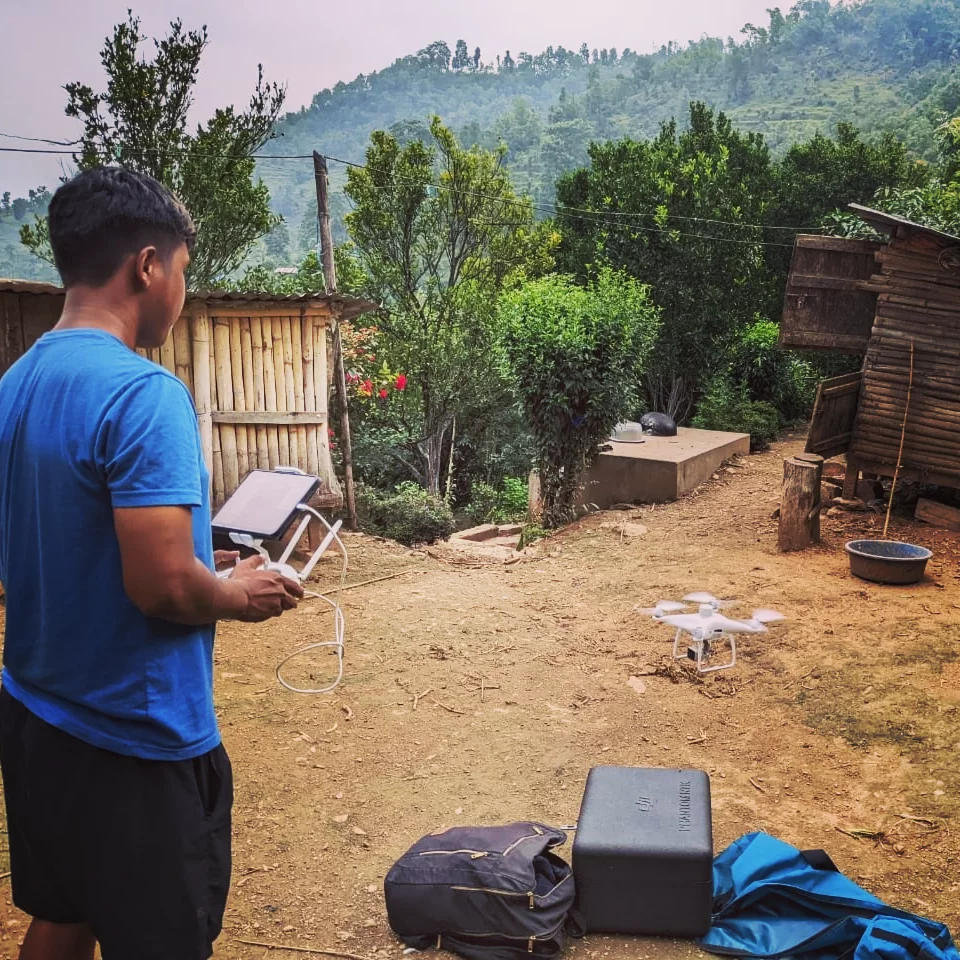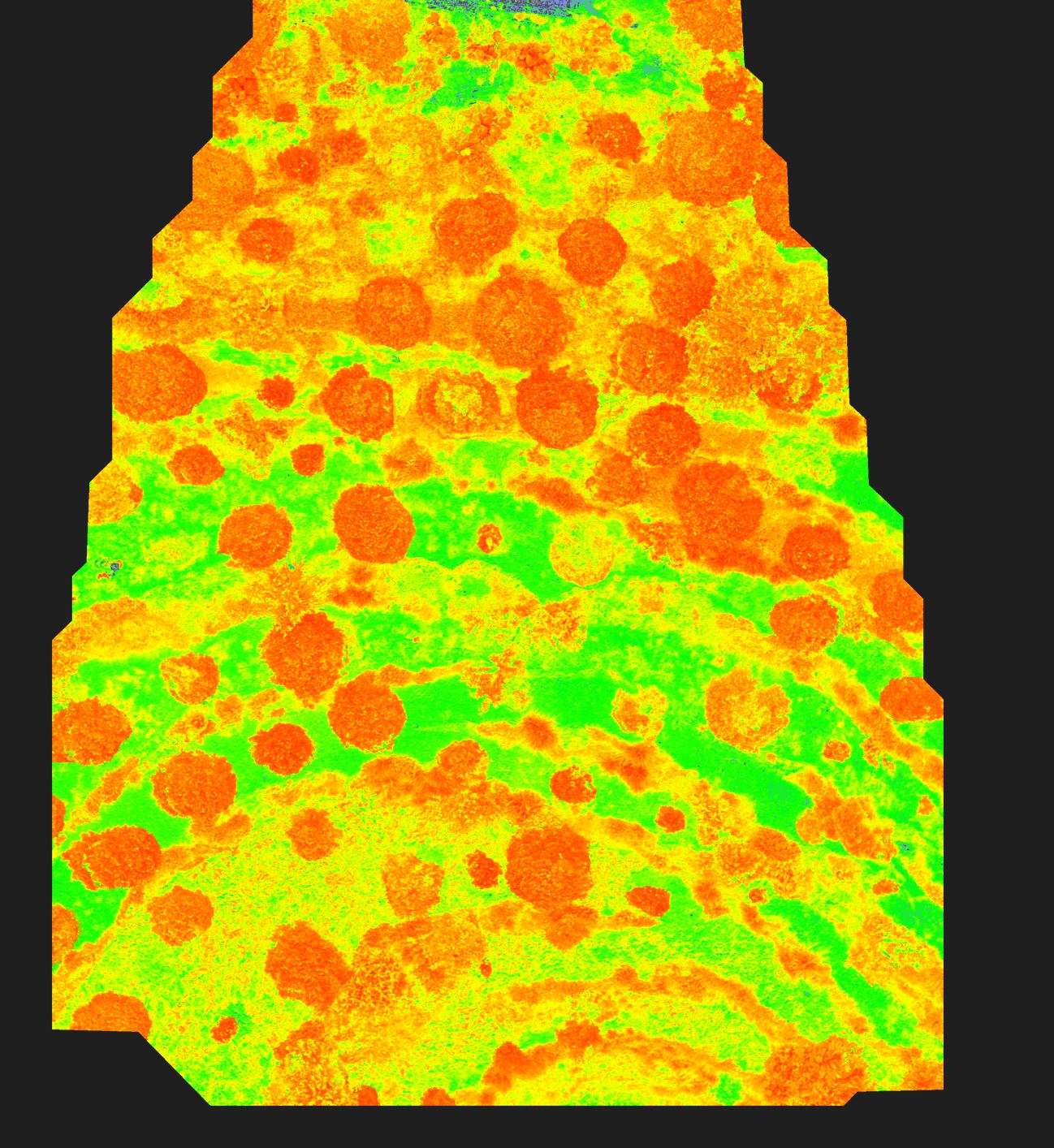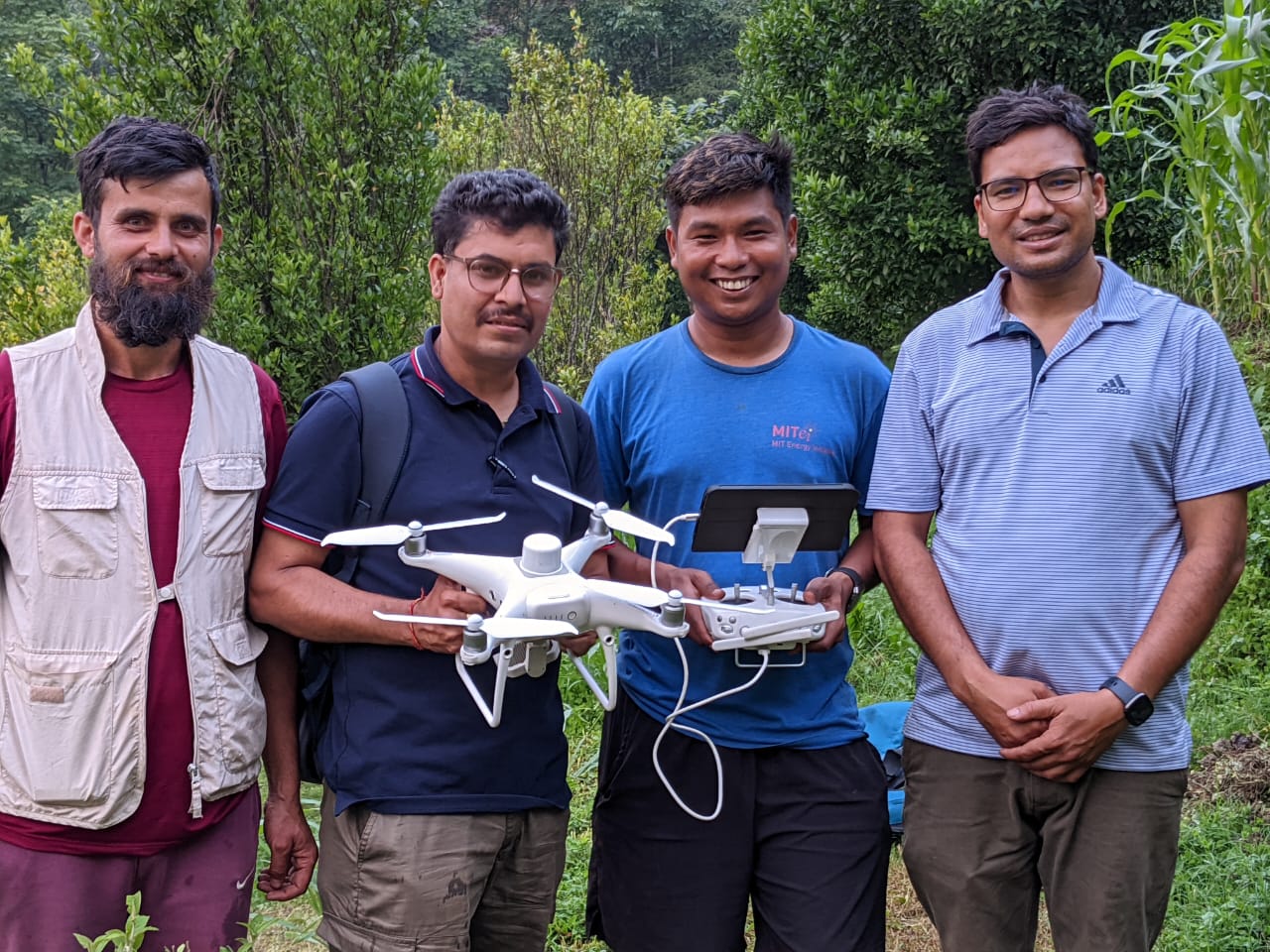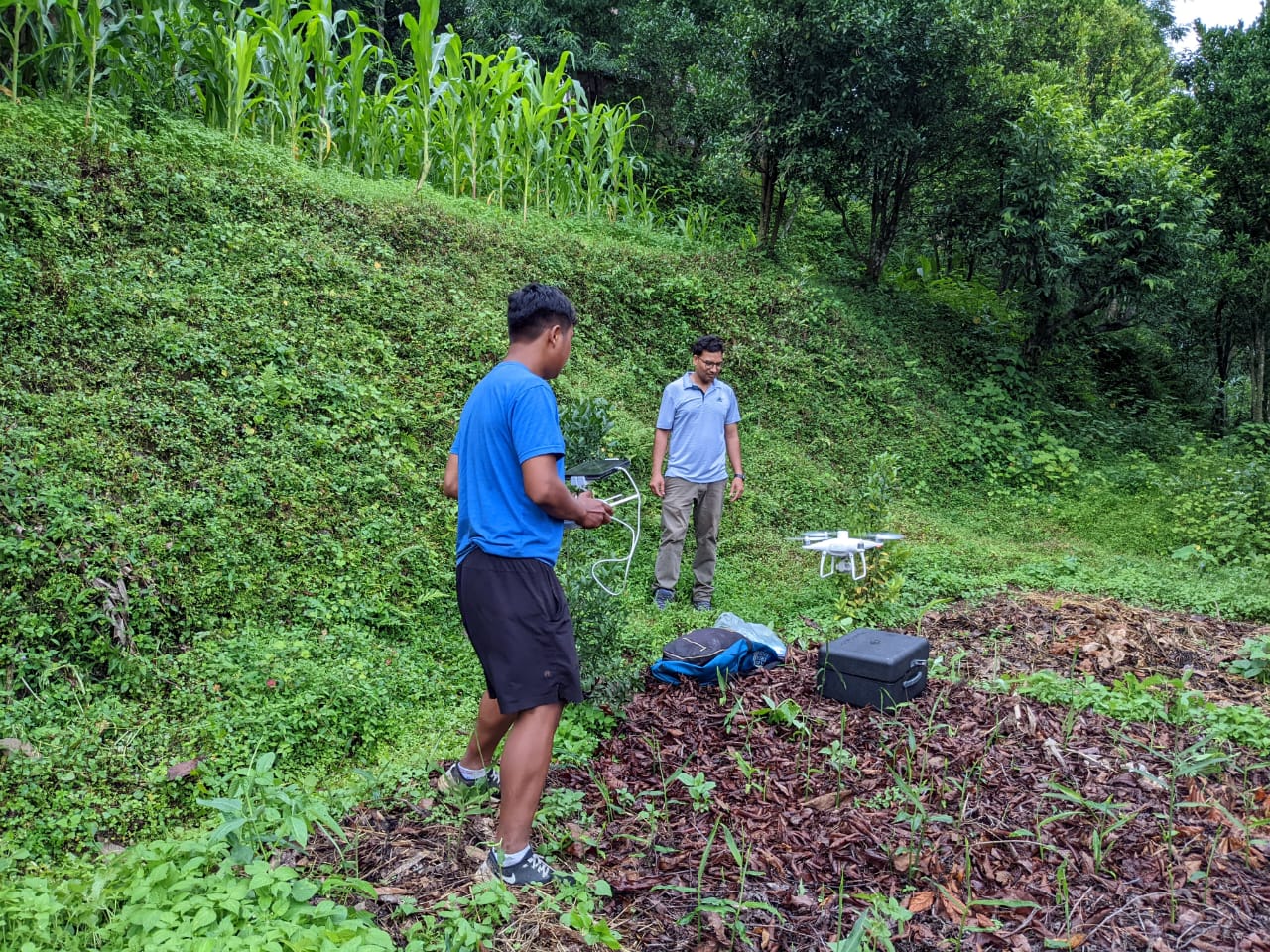- July 08, 2022
Learn updates about Hem's research in Nepal!
This past spring, we caught up with Hem Chaudhary (Mathematics and Chemical-Biological Engineering '23), who's conducting an independent research project on reducing pesticide residue in Nepal! We checked in to see how his research has evolved so far this summer. Read the full interview below to learn more!
Can you describe what your working on this summer?
For the summer, I am working on two projects. For project one, my team and I are exploring the usage of multispectral drones to rapidly detect citrus greening in orange trees in the hills of Nepal. Citrus greening is an economically important disease of citrus plants around the world. In Nepal, the disease was first identified in 1968, and by now the disease has spread across all the major citrus-producing hubs of Nepal. The disease is caused by Candidatus Liberibacter spp bacteria, however, it is spread from one tree to another by an insect named Asian Citrus psyllid. Citrus greening does not have a cure, therefore, the only thing that can be done about it is to prevent it from spreading; in other words, identify the infected trees and cut them down. The complication is in identifying the infected trees. In Nepal, the only method available to confidently identify the infected trees is leaf-by-leaf polymerase chain reaction (PCR) testing. The bottleneck for PCR testing is primers which, in the context of Nepal, have to be imported from the US or South Korea. Primers can take months to get to Nepal consequently causing PCR testing to take up several months. To make the problem worse, in the early asymptomatic stage, Citrus greening is localized in the few leaves of the trees which further complicates sampling of the leaves for PCR testing.
How is your research addressing the problem?
The visible symptoms of Citrus greening are blotchy mottle leaves, stunted growth, premature fruit drop, reduced fruit size, corky vein, and root decline. However, the infections start from a few localized leaves. Furthermore, the infected trees can remain asymptomatic in the visible light spectrum for months to years. Therefore, the usage of multispectral drones has been popular in the last few years to scan citrus orchards due to their unique ability to capture pictures in a broader light spectrum, such as Reg Edge(RE) and Near Infrared(NIR). The utility of the technology can be extremely high especially in the context of Nepal because first, the existing method to diagnose the disease takes too long, and second, the hilly terrain in which citrus farming is done is arduous to navigate by human surveyors. We are the first team to have brought a multispectral drone to Nepal and we are using the multispectral images to develop algorithms to rapidly detect citrus greening on orange trees. To collect samples and take pictures with our multispectral drone, we occasionally have to travel to orange orchards in the Hills.

Can you share any photos?


What is your second project?
For the second project, I am working on extending the domain of nutriomics to include agriculture. Nutriomics is the emerging field in biotech that studies the precise relation between nutrition and human health. Two major agents in the field are nutrition and the omics profile of humans. Nutrition represents both macro and micronutrients that are essential for the well-being of our bodies. Carbohydrates, Protein, and Lipids are considered macronutrients while Vitamins, Minerals, Flavonoids, and Carotenoids are considered micronutrients. Similarly, the omics profile represents Genomics, Epigenomics, Microbiomics, Lipidomics, Proteomics, Glycomics, Transcrioptiomics, and Metabolomics. The basis for Nutriomics is that omics profiles for different individuals are different hence based on their omics profile their macro and micro nutritional needs are different.
However, we do not consume micro and macronutrients in isolation; for example, we do not eat 30g of carbohydrate, 20g of protein, 10g of lipid, 2g of Vitamin A, 1 g of Vitamin B12, and 3g of Flavonoids. Instead, we eat grains, vegetables, and fruits and get the needed nutrients from them. But surprisingly Nutriomics does not acknowledge the nutritional variability in the food we eat. For example, they treat, say, carrots from farm A as the same as carrots from farm B. However, based on the type of carrot seeds used, and the agricultural practices employed in the farms, say, A and B the nutritional content of carrots from these farms can be different. Similar to nutritional variability, there are two more relevant parameters that variability, I think, Nutriomics should consider. One is pesticide variability; pesticides have become an integral part of the agriculture system, and they are not going to be replaced anytime soon. We do not need pesticides to function, however, plants need them to protect themselves from weeds, insects, nematodes, fungi, and bacteria. Therefore, we can not avoid pesticides, however, what can be done is based on our omics profile we can minimize the application of pesticides on our food that may have the highest marginal harm to us. The second variability is the impact on the environment; agriculture interfaces with soil, water, air, and local biodiversity. The kind of agriculture practices farmers adopt affects the local environment, and the responsibility falls on the consumers to encourage farmers to adopt more sustainable agricultural practices. One simple environmental parameter that we can think of is energy usage to produce, say, carrots. So in the case of, say, farm A and B, maybe farm A uses 80% sustainable energy to produce carrots while Farm B only uses 30% sustainable energy, then perhaps consumers who can afford should use economic incentives to encourage Farm B to use more sustainable energy. The energy parameter is just an example, there can be other parameters that represent how well farmers take care of the soil, how carefully they are using phosphate and nitrates, how carefully they are using different modes of pest controls, etc.
What are the next steps?
I want to incorporate three variabilities of food, which are, nutritional, pesticides, and environmental parameters in Nutriomics. Therefore, for the summer I am spending the majority of my time reading papers on clinical nutrition, and I am excited to see how my ideas evolve over the rest of the summer.
What have you been doing outside of your research?
Apart from the work, I do some fun things. Towards the beginning of the summer, I trekked for 10 days in the Everest region. During the trek, I visited Everest Base Camp, Kalapathar, Chola Pass, and 6 Gokyo Lakes. Similarly, these days I am exploring Kathmandu valley by running, and just last week I ran my first 50 KM in the valley. Once in a while, I also play golf. Lastly, in the evening I am going out with my friends to try foods around Boudha, where I am staying in the summer.


" />
